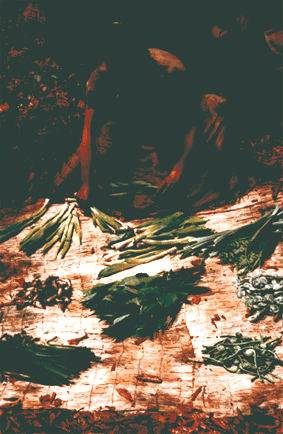Initial Jomon sub-period
This sub-period is also called the Earliest Jomon by some authors. Compared to the preceding Incipient Jomon period, there is an increase in the number of sites and in the types of remains that are found. Yet, they are not as numerous as those belonging to later sub-periods. Open settlements with house pits are found throughout Honshu and Kyushu; approximately 200 house-pits have been found which are dated to this period. Koyama estimates the entire population for the archipelago to be just below 22,000 people.
Shell middens, particular in the Kanto region, indicate that the inhabitants started exploiting the marine environment at this time. Fish hooks, made of bone, have also been recovered in the course of excavation. Compared to the preceding sub-period, ground stone tools become more abundant. This suggests that plant foods became more important in the daily diet.
The Jomon people began to make cord-impressed pottery, usually with conical or pointy bases at this time. The decorations were created on the pottery by twisting cord and pressing it into the clay, or rolling cord-wrapped sticks across the clay (yoriitomon design). Carved sticks (oshigatamon design) and shells (kaigara chinsenmon) were also used to create designs on pottery. Some of the major pottery types belonging to this time period are: Natsushima, Igusa, and Tado.
 |
Jomon woman gathering plants.
 English (UK)
English (UK)  Ру́сский
Ру́сский  中文
中文  Portugues
Portugues  한국어
한국어  Espanol
Espanol  Deutsch
Deutsch